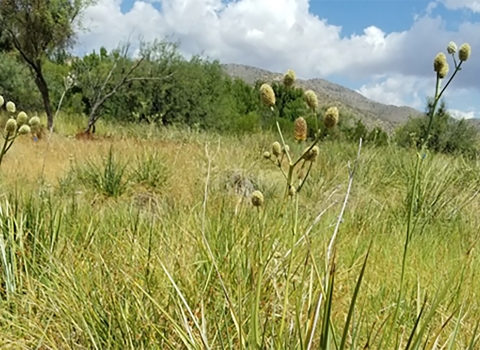CARLSBAD, Calif. — After conducting a second in-depth review of two species commonly known as Joshua trees (Yucca brevifolia and Yucca jaegeriana), the U.S. Fish and Wildlife Service concluded neither species requires protection under the Endangered Species Act.
Joshua trees are best known for their presence in Joshua Tree National Park, but the two species span more than nine million acres of high-desert habitat in California, Arizona, Nevada, and southwestern Utah. Adapted to harsh desert conditions, these long-lived trees can tolerate extreme temperatures, ranging from 4 to 120 degrees Fahrenheit and inhabit elevations between 1,279 to 8,775 feet.
“Through our scientific assessment, the Service determined that Joshua trees will remain an iconic presence on the landscape into the future. Although the two species do not need the protections of the Endangered Species Act, the Service cares deeply about Joshua trees and their roles in the desert environment,” said Service Pacific Southwest Regional Director Paul Souza. “We are coordinating closely with partners to ensure the long-term conservation of these species, including the National Park Service and other Federal agencies, and the State of California, which is also considering measures for the protection of Joshua trees.”
In reviewing the species’ status, the Service looked at threats from wildfire, invasive grasses, climate change climate change
Climate change includes both global warming driven by human-induced emissions of greenhouse gases and the resulting large-scale shifts in weather patterns. Though there have been previous periods of climatic change, since the mid-20th century humans have had an unprecedented impact on Earth's climate system and caused change on a global scale.
Learn more about climate change and habitat loss and fragmentation. Although some threats affect the species in areas of their respective ranges, none of the threats rose to the level that resulted in the species meeting the definition of a threatened or endangered species throughout all or a significant portion of their ranges.
Projecting the primary threats into the foreseeable future, we can more reliably predict impacts and the species’ response to 2040-2069. We find that Joshua trees display enough resiliency, redundancy, and representation to not be at risk of becoming endangered in the foreseeable future.
Yucca brevifolia occupies more than 4.4 million acres across California and Nevada; and Yucca jaegeriana covers more than 4.9 million acres in portions of California, Arizona, Nevada and southwestern Utah. The two species of Joshua tree are similar in appearance; however, they rely on different species of yucca moth for pollination, and Y. jaegeriana has shorter leaves and is shorter in height than Y. brevifolia.
Most habitat occupied by the two species is federally protected and managed by the Department of the Interior’s National Park Service and Bureau of Land Management, the Department of Agriculture’s Forest Service or Department of Defense, and they conserve and manage those lands to minimize threats to the plants. A much smaller portion of habitat is managed by state or local governments or is privately owned.
The Joshua tree finding is available for public view today at the Federal Register, and will officially publish in the Federal Register on March 9, 2023. All documents and supporting information for the 12-month finding will be available at www.regulations.gov. In the search box enter Docket No FWS-R8-ES-2022-0165 and click “search.”
Photos of both Joshua tree species are available on Flickr: Joshua tree images
The U.S. Fish and Wildlife Service works with others to conserve, protect, and enhance fish, wildlife, plants, and their habitats for the continuing benefit of the American people. For more information about our work and the people who make it happen, visit https://www.fws.gov/office/pacific-southwest-region-headquarters or connect with us via Facebook, Twitter, YouTube, and Flickr.
-FWS-

